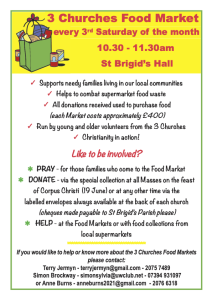“In the name of the Father, and of the Son, and of the Holy Spirit. Amen.”
On Trinity Sunday we remember that these are some of the most often used words in our faith. Use of the sign itself goes back to early Christianity, when in the second century it was used during baptism, during ablutions before praying at fixed prayer times, and in times of temptation. The sign was originally made in some parts of the Christian world with the right-hand thumb across the forehead only. Traces of this remain in our Mass at the beginning of the Gospel, at the giving of ashes on Ash Wednesday, and the use of chrism at Baptisms and Confirmation.
The “right to left” form is used by the Eastern Orthodox Church, and the Eastern Rite Catholic churches, while “left to right” is used in our own Latin Rite Catholic church. The sign of the cross is also used in Anglicanism, Lutheranism, and some branches of Protestantism. In the Eastern Orthodox and Byzantine Catholic churches, the tips of the first three fingers are brought together, and the last two are pressed against the palm. The first three fingers express one’s faith in the Trinity, while the remaining two fingers represent the two natures of Jesus, divine and human.
We might begin the day, or our prayers and activities with the Sign of the Cross, dedicating the day to God for strength in temptations and difficulties. St John Vianney said a genuinely made Sign of the Cross “makes all hell tremble.” We might make the sign of the cross in response to blasphemy, or to seek God’s blessing before or during an event with uncertain outcome. In Hispanic countries, people often sign themselves in public, such as athletes who cross themselves before entering the field or while concentrating for competition.
It’s customary to make the Sign of the Cross using holy water when entering a church. This reminds us of our baptism and that we are entering a sacred place that is set apart from the world outside. The sign of the cross is made at several points in the Mass. We sign ourselves during the introductory greeting, the small signs of the cross before the Gospel, and at the final blessing. We can also do so at the end of the penitential rite. The priest blesses a deacon before he reads the Gospel, he signs the bread and wine at the invocation of the Holy Spirit before the consecration, and blesses the congregation at the conclusion of the Mass. Outside the Mass, a priest or deacon blesses an object or person with a sign of the cross.
Fr Matthew
